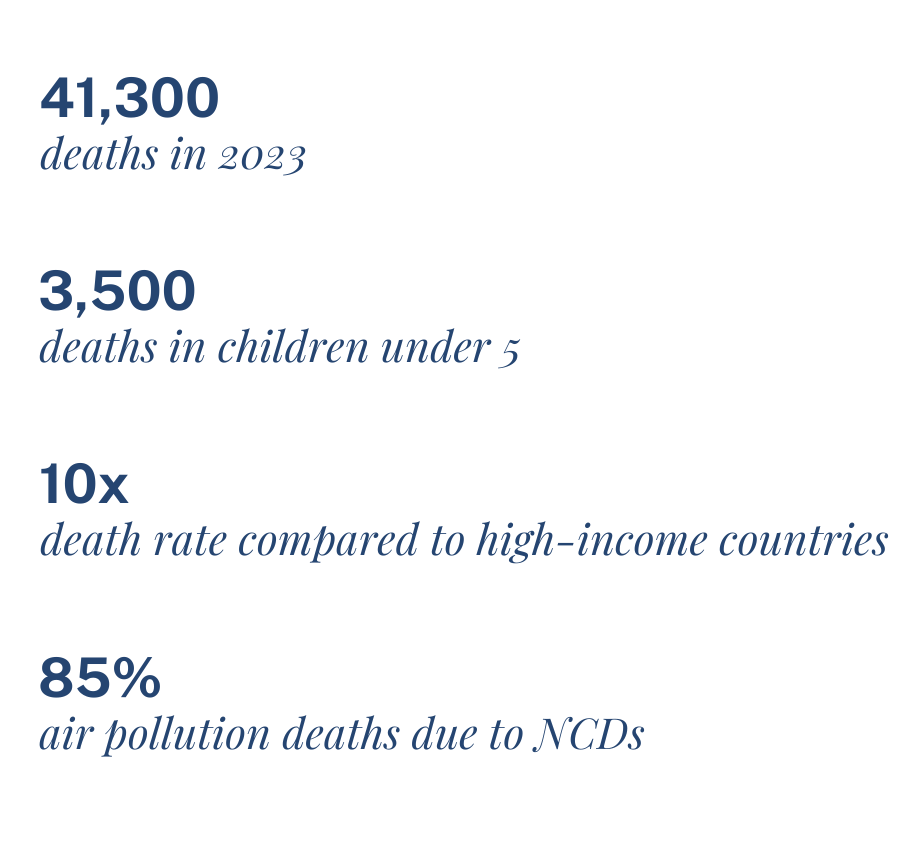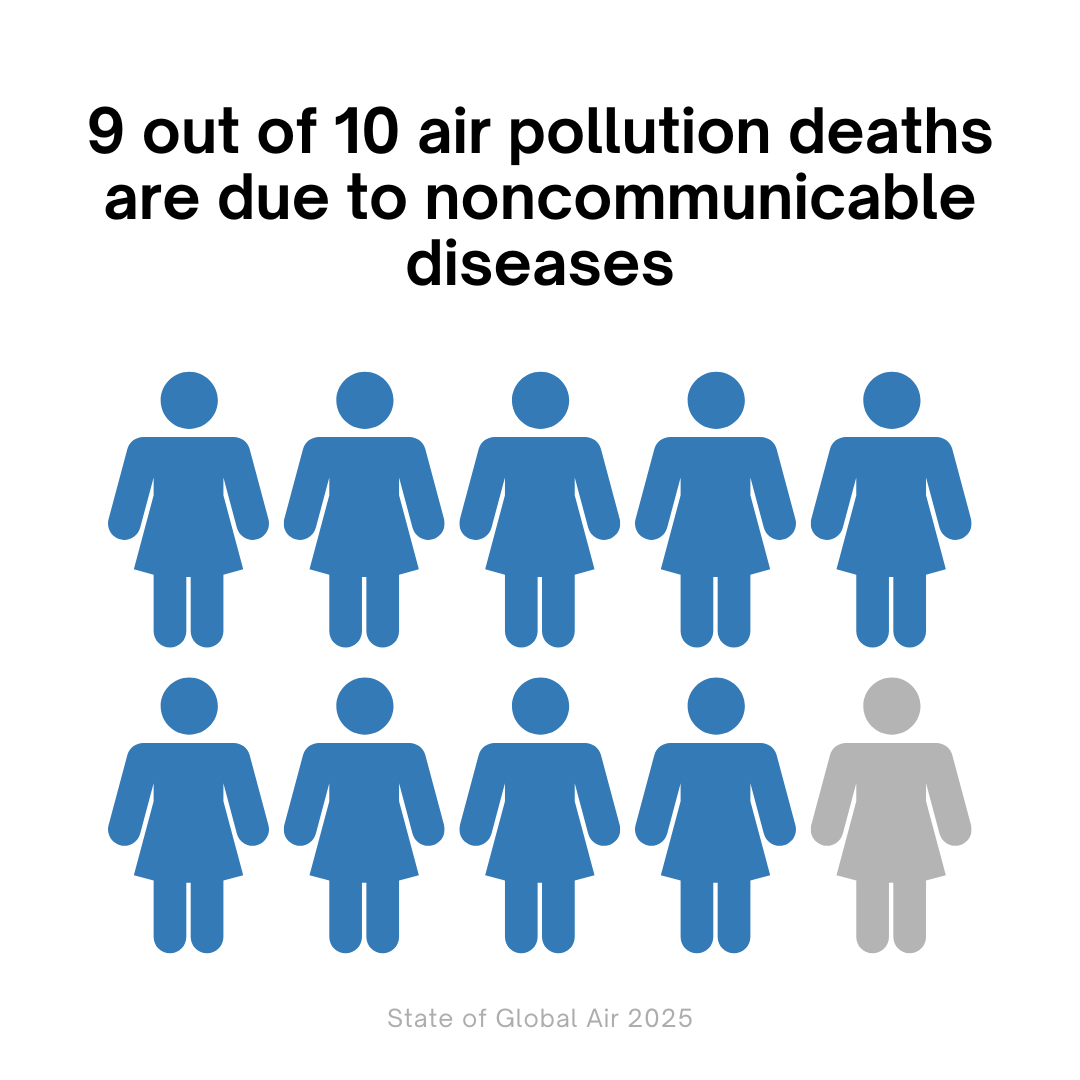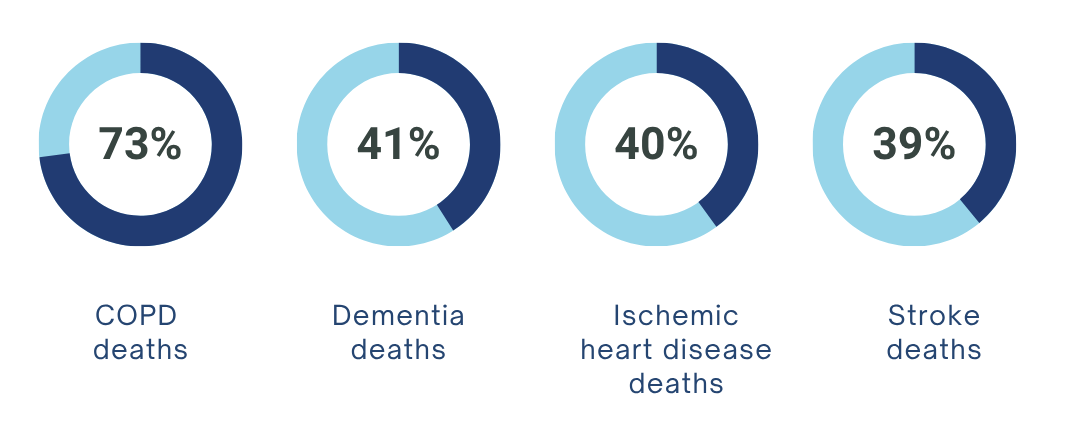Air pollution killing season starts early
Dirty air kills 41,000 Nepalis a year, this winter will be no differentThe winter air pollution season started early this year with emissions, Diwali firecrackers and crop residue burning making the air unbreathable across north India.
Much of the pollution was transboundary, with prevailing winds carrying the suspended particulates from Pakistan, across India to Nepal and beyond.
All this pollution and domestic emissions killed 41,300 in Nepal in 2023, and 85% of all deaths were because of noncommunicable diseases such as heart and lung disease, lung cancer, diabetes, and dementia, according to the State of Global Air (SoGA) 2025 report released Thursday.
With the onset of winter, Kathmandu Valley’s own emissions are trapped in a surface inversion layer and as in previous years will have some of the worst air quality in the world.

The SoGa report says air pollution has now become the leading risk factor for deaths in Nepal, ahead of tobacco and high blood pressure. Interestingly, while the health impacts due to environmental risk factors such as unsafe water and sanitation have reduced significantly since 2000, the opposite is true for ambient PM2.5 (particles smaller than 2.5 microns).
Globally, 7.9 million deaths were attributable to air pollution– about 1 in 8 deaths – in 2023. Of this total, 4.9 million deaths were attributable to PM2.5 exposure, 2.8 million were from household air pollution, and 470,000 were from ozone.
Similarly, dementia attributable to air pollution resulted in 626,000 deaths and 40 million healthy years of life lost. And 95% of air pollution attributable deaths in adults over the age of 60 are due to noncommunicable diseases.
The burden of noncommunicable diseases in relation to air pollution is rising worldwide and in Nepal. The SoGA report shows that nearly nine of ten global air pollution deaths are from chronic ailments, and half of all respiratory disease deaths are attributable to air pollution.

In Nepal, air pollution is responsible for three out of four COPD deaths, one out of three heart deaths and one out of five diabetes deaths. More than one third of lower respiratory infection deaths were due to air pollution.
“The data presented in the State of Global Air report highlight the significant impacts of poor air quality on the health and well-being of billions of people around the world, especially those living in Asia and Africa,” says Pallavi Pant of the Boston-based Health Effects Institute (HEI) that released the report in collaboration with the Institute for Health Metrics and Evaluation and the NCD Alliance.
She adds: “Growing momentum on air quality management across those hard-hit locations, including expansion of air quality monitoring, adoption of air quality regulations, and sector-specific interventions are yielding improvements for those most impacted.”
Low- and middle-income countries stand to gain most by reducing air pollution, with particularly strong impacts on children, older populations, and people with pre-existing health conditions.
Indeed, of the 41,300 air pollution deaths in 2023 in Nepal, 31,600 were in adults over the age of 60 years and 3,500 in children below five years. Death rate for air pollution in Nepal, which is 178 per 100,000, is more than 10 times higher than high-income countries, which is at 17 per 100,000.

“Win-win solutions for air pollution and NCDs exist, with added benefits for climate, physical activity, nutrition, and many other global development priorities,” says Alison Cox, Policy and Advocacy Director at the Geneva-based NCD Alliance. “These policies are effective and deliver a strong return on investment - for the sake of our people and the planet we need to implement them faster.”
Fine particle pollution (ambient PM2.5) is the largest driver of air pollution’s burden of disease worldwide as kit attributed to 4.9 million deaths and 124 million healthy years of life lost in 2023. Vehicles, power plants, factories, and homes, as well as agricultural and industrial activities, waste burning and wildfires are some of the biggest sources of pollutants.
South Asia is among the regions of the world with the highest exposures to ambient PM2.5 , while more than 36% of people around the world live in areas where PM2.5 levels do not meet even the least stringent interim target.
As per the report, 78% of Nepal’s 30 million population lives in areas where annual PM2.5 exposure exceeds the least stringent WHO Air Quality Interim Target of 35 µg/m3. Meanwhile, exposure to household air pollution due to the use of solid fuels for cooking remains an important driver for the disease burden in the country.
“Ongoing efforts to meet global development goals are not achievable without directly addressing air pollution,” says Maria Neira, Commissioner of Our Common Air. “Countries and cities must focus their efforts toward reducing air pollution emissions, including household air pollution, which has particularly severe impacts on young children and older people across Asia and Africa.”




